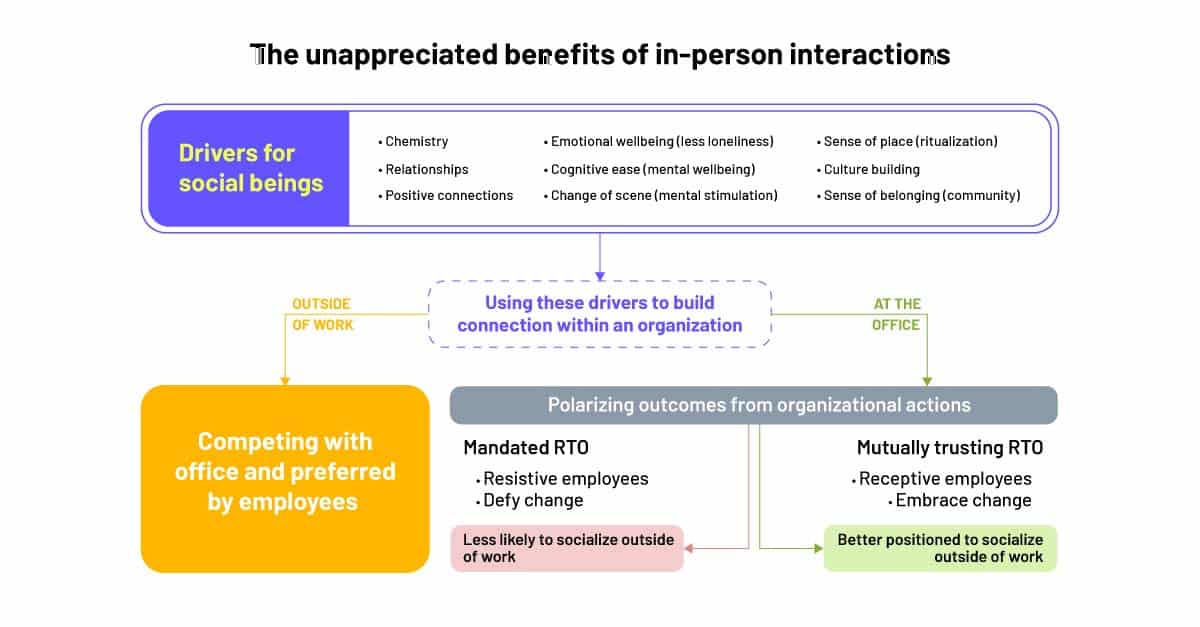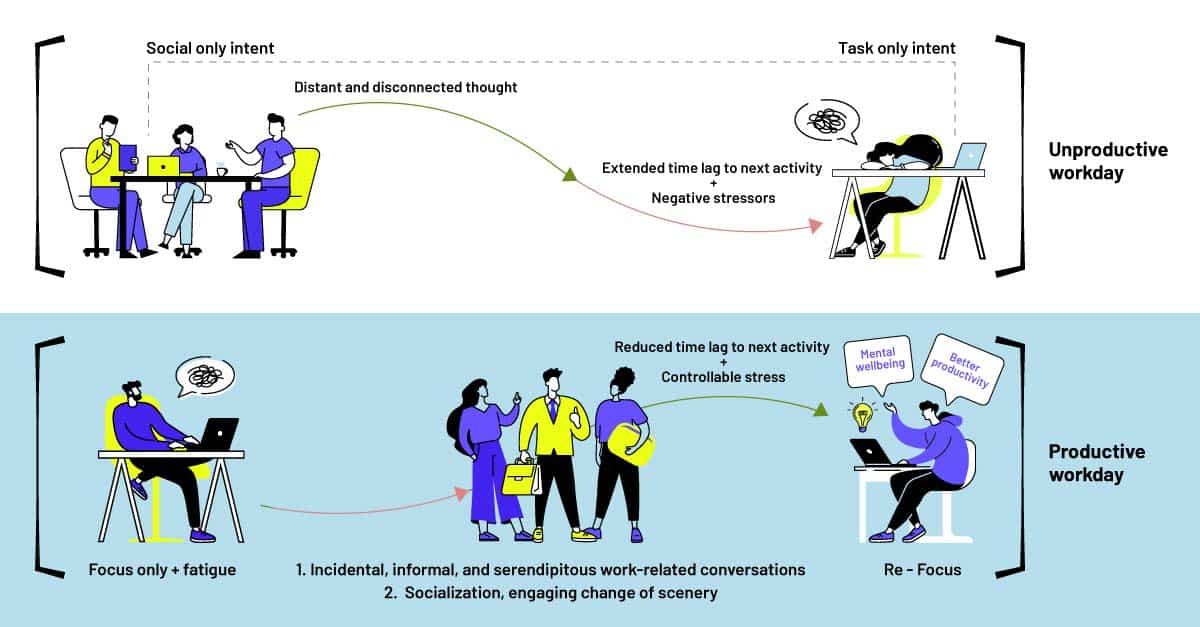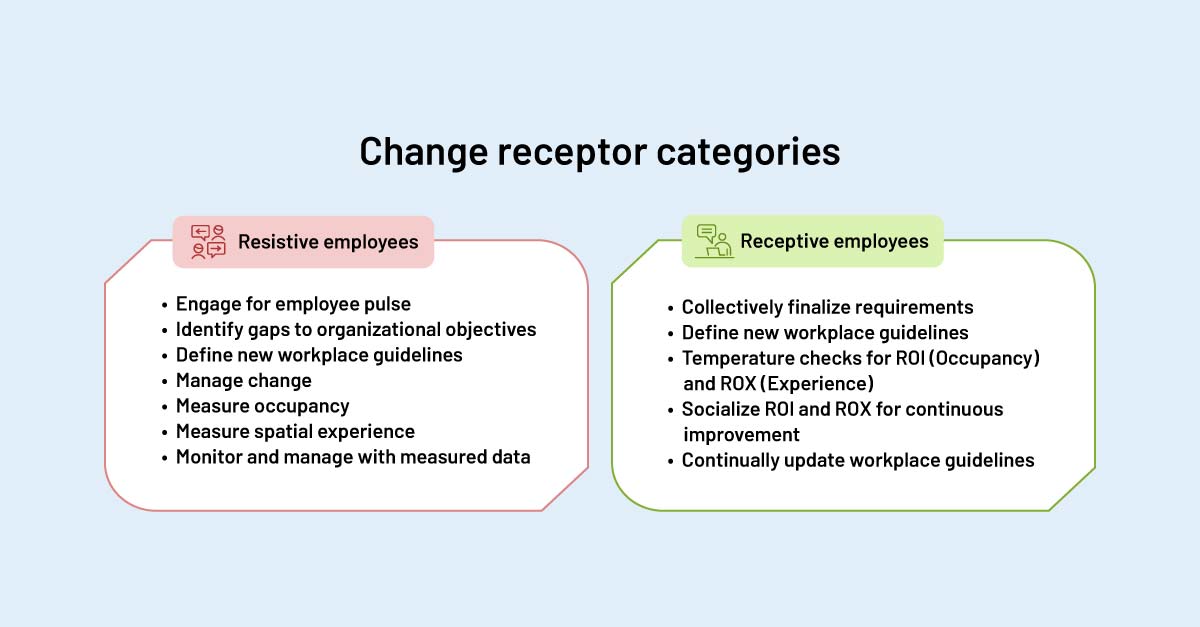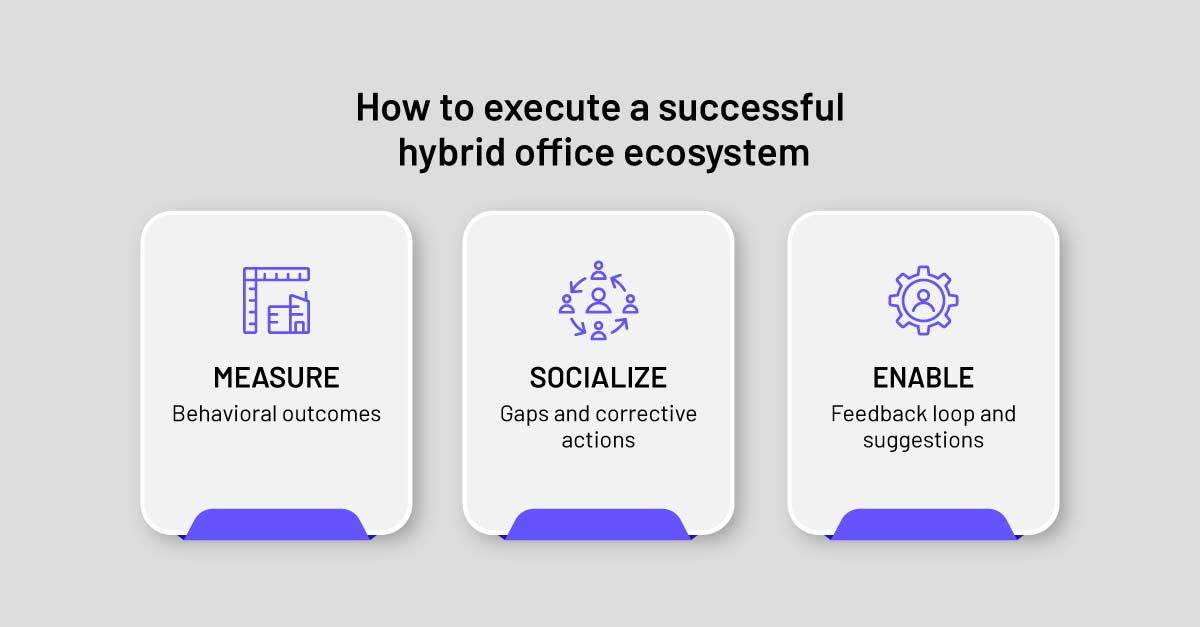Technology allows us to collaborate effectively remotely, but without close physical proximity, we’re missing out on spontaneous in-office interactions that foster trust and well-being. How can we find a harmonious balance between social and work in today’s hybrid office?
In-office social rhythms
One could argue that we had stronger bonds with colleagues before the shift to hybrid work. With physical proximity, bonds organically blossomed amidst work triumphs and tribulations. Now, many feel isolated and distant from each other, loosening the camaraderie during team successes and shortcomings.
Many believe this sentiment is rooted in the lost sense of informality. Before the pandemic, close physical proximity allowed us to pop by desks or stop each other in hallways, allowing us to interact organically without putting a meeting in the calendar. Fast forward to today’s hybrid paradigm of virtually connected teams and colleagues, and you get an environment where even the most informal interaction has to be scheduled and involves checking calendars and IMs for “spontaneous” interactions.
The rhythm of in-office social interactions—like spontaneous coffee breaks or walks—was almost like a workday “palate cleanser.” These social rhythms were varied but, at their core, focused on connecting humans to humans.
Now, the rhythm of work is very one-dimensional: you sit or stand at a desk and look at your laptop or phone screen. This stifles spontaneous ideation and problem-solving opportunities as formality has crept into our connections, making us emotionally distant and divided by the physically distancing chemistry.
The pandemic created a dissociative attitude toward the office. We need to organically reclaim the familiarity and bond between individual employees and make them feel like a group.
Social rhythms outside of work
During the tumultuous period of the pandemic, our bonds with loved ones outside of the office deepened as we faced life’s challenges head-on. The profound experiences we shared compelled us to reevaluate the significance we attached to traditional office work. In a heartbeat, we transitioned to mandatory remote work, guided by the urgency of the situation.
This rapid shift reshaped our personal lives and left an enduring mark on our professional outlook. We discovered the power of technology in fostering social connections and realized that physical proximity was no longer a prerequisite for effective collaboration. However, amidst this transformation, we inadvertently drifted away from the camaraderie and sense of belonging fostered within our organizations’ walls.
A stark divide emerged between those who championed the newfound flexibility of remote work and those who clung to the traditional notions of productivity tied to office presence. This disparity in perspectives underscores a fundamental difference in how success is defined and valued within our ranks.
It’s as if we’re looking through different lenses, each distorting our perception of reality. Can we bridge this gap and restore harmony, or is this a pivotal moment signaling the irreversible shift away from the traditional office hustle?

The benefits of fostering an environment for rich interactions
In their eagerness to revive the social fabric within office spaces, employers often resort to heavy-handed directives, inadvertently stifling the organic development of social bonds crucial for a thriving workplace community. Rather than fostering genuine connections that positively influence productivity, these top-down mandates often reduce social interactions to superficial exchanges over coffee.
True workplace camaraderie is built on deeper, ongoing connections rooted in collaborative work endeavors. However, organizations and employees are at odds regarding the extent of office presence and remote work arrangements.

Finding a harmonious balance amidst this divide poses a challenge. Is there a solution that intuitively guides all stakeholders—from business owners and managers to individual contributors—through this transition, minimizing disruption and maximizing benefit for all parties involved?
Gauging employee receptiveness

Understanding employees’ receptiveness to change is key to implementing a successful and sustainable Return to Office (RTO) program. Assessing employee openness requires accurate gauging factors such as office space requirements, peak occupancy times, and evolving job roles influenced by advancements in AI technology.
As organizations navigate these changes, they must confront the dichotomy between imposing rigid return-to-office mandates and fostering a culture of trust and autonomy among employees. Achieving a delicate equilibrium between these extremes requires constant evaluation of metrics and transparent communication with teams to address any deviations or maintain momentum.

Conclusion
In this dynamic landscape, we need a comprehensive solution to manage office space, occupancy trends, and evolving work patterns. Such a tool should continuously monitor supply metrics, utilization rates, and anticipated demand, and enhance employees’ spatial experience to ensure optimal workplace efficiency and satisfaction.
We will explore each of these in detail in the coming months. Stay up to date by subscribing to our blog below.
Enjoying our blog? Be sure to subscribe to stay up-to-date on Saltmine's original content with the form below!


